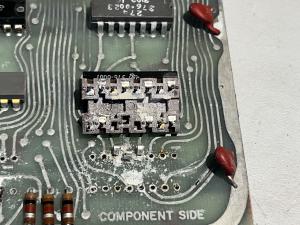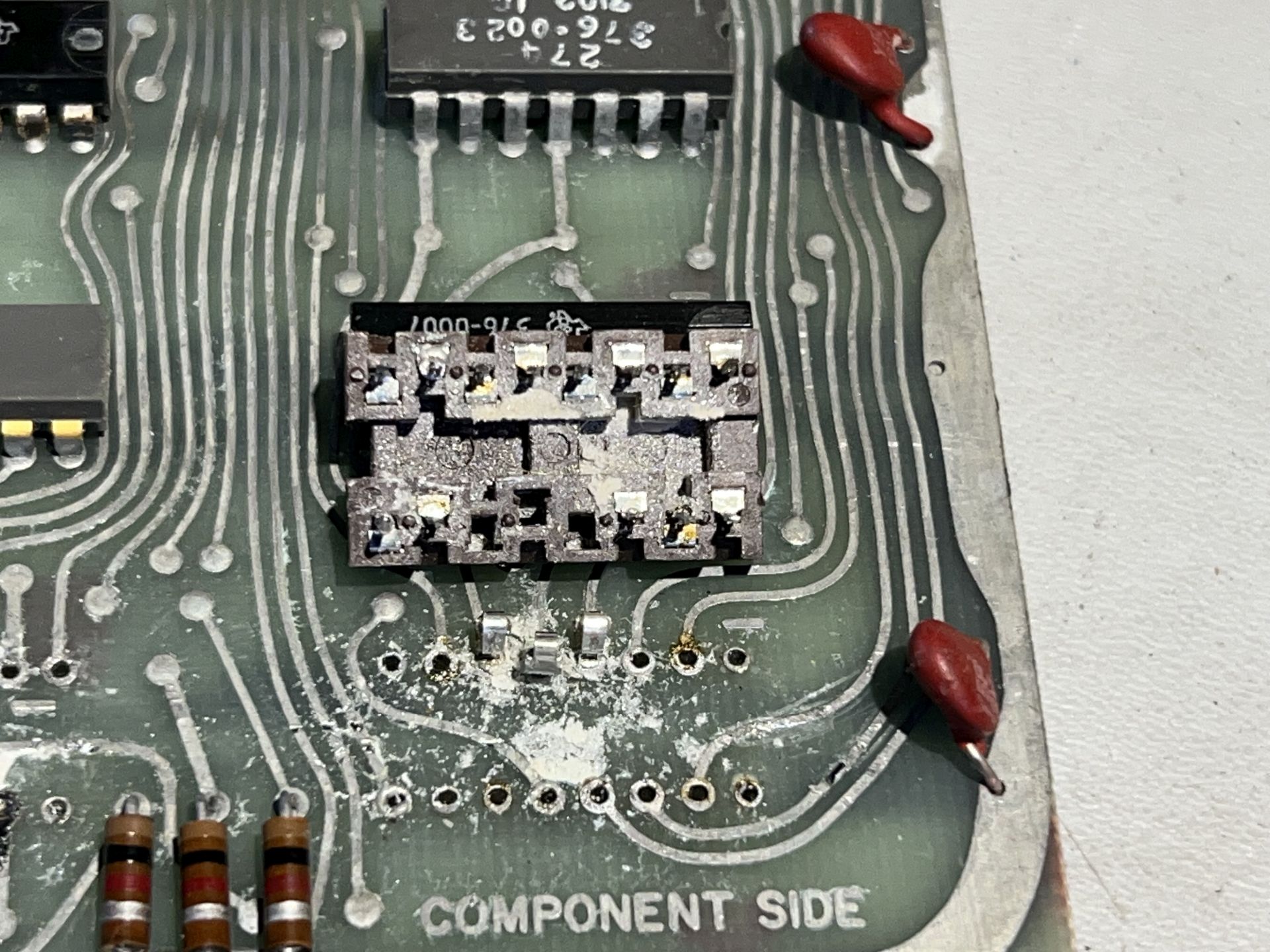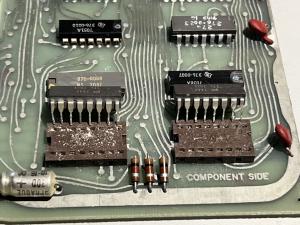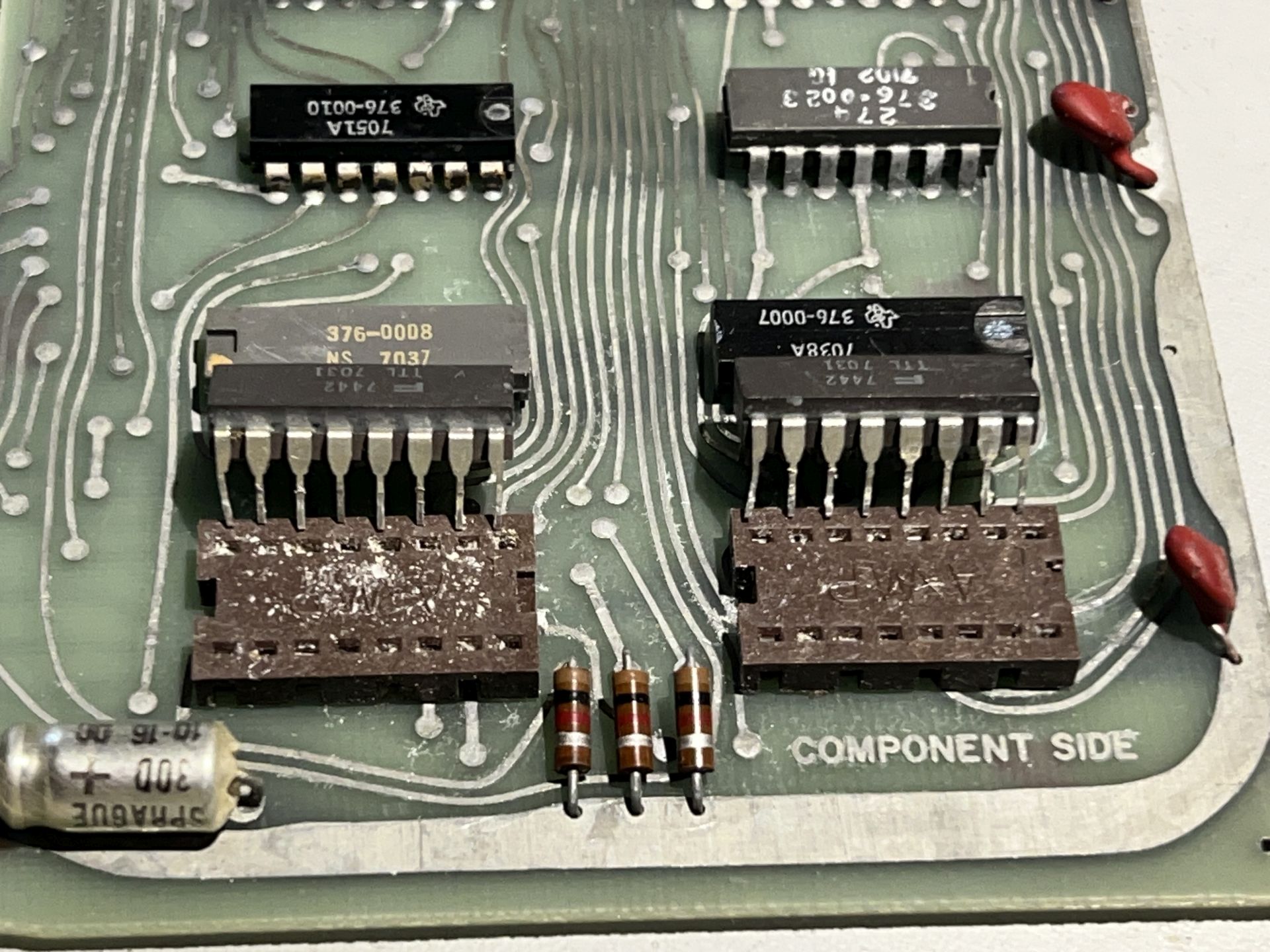Wang 600 IC Socket Corrosion
Next Log Entry
IC sockets should always be carefully checked
The initial assessment of this machine had revealed that two TTL ICs (out of the 250 or so total) were placed in sockets. Past experience has shown that sockets can cause poor reliability with oxidation or even frank corrosion occurring between IC leg and socket pin. It’s therefore good policy to inspect socketed ICs closely, preferably by removing the ICs, cleaning legs if needed and then replacing. The remove-replace cycle can be useful in itself to scrape away any thin oxide layer that can contribute to intermittent and puzzling failures.
In this case it was obvious that there was a buildup of crystalline material around the legs of both socketed ICs. Removing the ICs revealed more material and finally desoldering the sockets revealed still more material under the sockets.
The ICs themselves appeared undamaged and after cleaning the ICs and the board, the same ICs were replaced by direct soldering. Further inspection of the two previously-socketed ICs and the board in general revealed some interesting features.
Both resoldered ICs were located side-by-side on the 5964 ALU board and were shown on the Wang schematics as 74145 BCD to decimal decoders, used together to decode the 16 states of the ST microinstruction field. Interestingly, the ICs were F 7442s, Fairchild’s (almost identical) version of the 74145. The 7442s had similar late 1970 date codes to the rest of the ICs on the board, suggeting that they were not later repairs. The 5964 board had been modified by clipping one lead of all the 1k pull-up resistors attached to the 74154 outputs, to recognise that the F 7442 has conventional TTL outputs rather than the open-collector outputs of the 74145. It seems most likely that the 7442s were original factory parts but it’s unclear why they were substituted, or why they were placed in sockets.
It’s also interesting to note that all the other ICs on this board have Wang internal part numbers rather than standard TTL designators. The Texas Instruments logo is still used, and perhaps NS on some other ICs means National Semiconductor. This appears to be an attempt to obfuscate the design of the ALU board to deter reverse engineering, at the cost of procuring custom-marked parts. Perhaps this explains the use of sockets for the parts marked with published designations - Wang-marked parts may have been unavailable but Wang still wanted to maintain the option to fit their own parts later.
Whatever the reason, the sockets had caused problems of their own after fifty years. The problems were reasonable easy to rectify but unfortunately this repair did not improve the overall state of the machine, which remained dead.
Previous Log Entry Back to Log Index Next Log Entry




